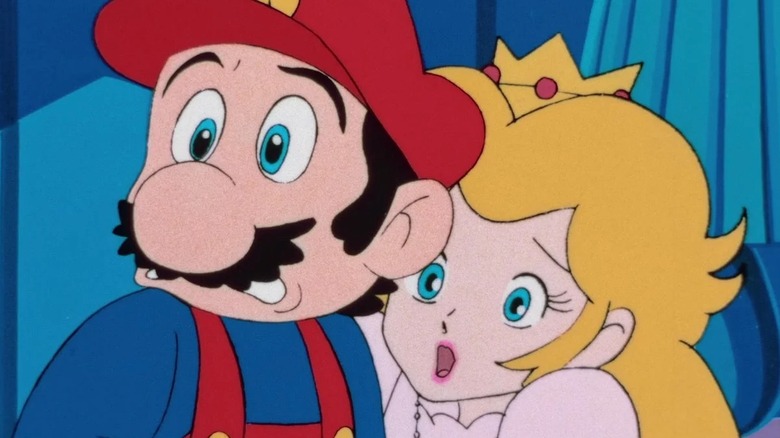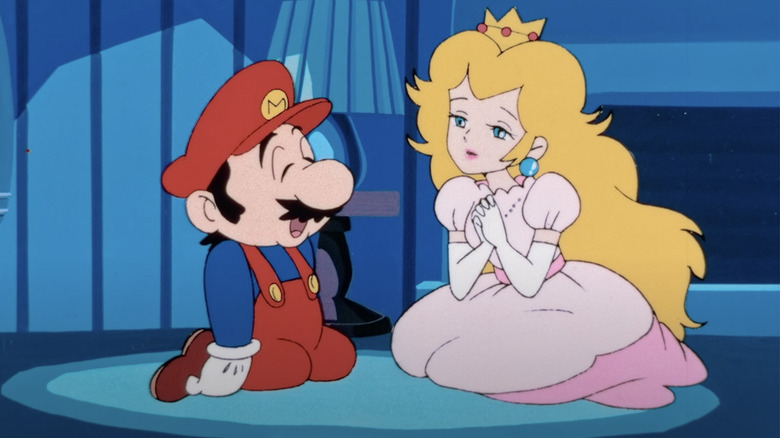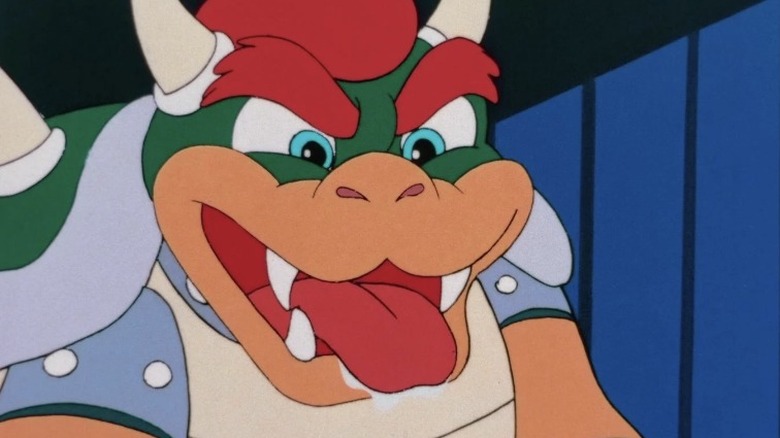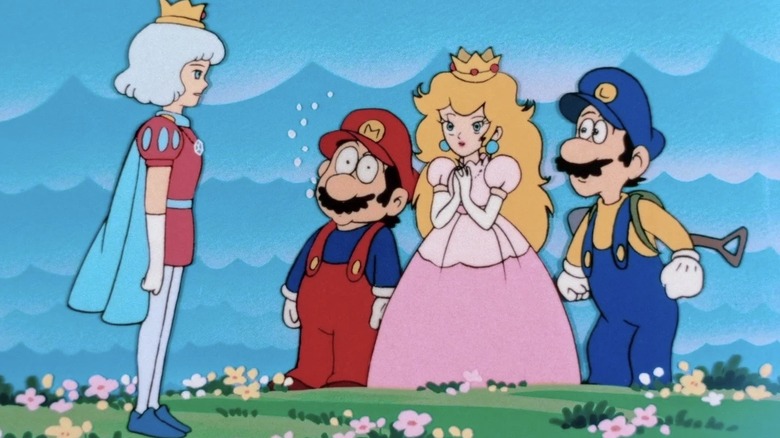The Original Super Mario Bros. Movie Was A Game-Changer (In More Ways Than One)
Universal and Illumination's "The Super Mario Bros. Movie" finally arrives in theaters on April 5, bringing an end to months of fan speculation and hesitancy. How will Chris Pratt's Mario be received by audiences? Will the tough new Princess Peach get to save the day? Is anyone in the world having a better time than Jack Black is as Bowser? Here's the thing, though: There already was a pretty fantastic animated movie starring Mario and his pals, and it came out way back in 1986, just one year after the NES release of "Super Mario Bros."
"Super Mario Bros.: The Great Mission to Rescue Princess Peach!" was the result of a collaboration between Grouper Productions, Nintendo, and the Shochiku-Fuji Company, who hoped to capitalize on the smash success of the first game on Nintendo's Famicom console. The 61-minute flick tells a story in which Mario and his brother Luigi, two normal fellas just trying to run their family grocery store, must venture into a video game world in order to save the titular princess from the dreaded King Koopa.
The anime is pretty light and silly, featuring plenty of slapstick and comedic takes on the original game's traps and enemies, but it was also a real game changer in the world of anime. In fact, it basically launched a sub-genre all on its own. Here's why it's still worth a watch all these years later.
It's a much better adaptation than 1993's movie
One of the first things you may notice about the movie is that it's not a one-to-one adaptation of the source material. There are definitely some weird changes to the characters and their world here, which makes sense, especially because the lore was still on its infancy. Luigi is portrayed as a bit more a money-hungry jerk, for instance, while King Koopa is depicted as having a change of heart after his first battle with Mario. Perhaps the biggest alteration to the canon here is the addition of Haru, Princess Peach's destined love who spends much of the movie trapped in the form of a dog.
But even those changes are relatively minor, and aren't quite as bewildering as the cyberpunk nightmare world of the 1993 live-action film, which is essentially "Super Mario Bros." in name only. At least most of the characters are recognizable in this version (even though some viewers may miss Dennis Hopper's delightfully camp performance).
When looking at this movie's place in the greater "Super Mario" franchise, what's especially important is that it largely retains the spirit of the original game. It even managed to inspire some elements of the series that were introduced in later installments. For instance, one of Mario's big moves against King Koopa in this movie is to pick him up by the tail and toss him, which is an attack that would be added to our hero's arsenal in "Super Mario 64." Mario also manages to steal Lakitu's cloud at one point in the movie, a trick that many players of "Super Mario World" and further sequels are very familiar with.
Why you should check out Mario's 'lost' anime film
Also, it's worth a watch because it's just a whole lot of fun. Unlike some other video game adaptations that take themselves way too seriously, the main goal of "The Great Mission to Rescue Princess Peach!" is to entertain. It somehow manages to cram a ton of recognizable set pieces and enemies into its brief runtime. The animation is fluid and energetic, not to mention packed with weird gags that would feel at home in later iterations of the franchise. At one point, Luigi excitedly eats a ton of mushrooms, which make him terribly depressed. Naturally, this means Mario has to find a "laughing mushroom" to make his little brother feel better. Weird stuff, but fun!
There's also a sweetness to this version of Mario and his friends that permeates every bit of this movie. From Mario and Luigi's partnership – in which they feel largely like equals – to the way in which Mario shows mercy to his enemies, the movie never allows itself to get too dark. The "Mario" games have featured some seriously disturbing elements over the years (some of which only adults might notice), but this Mario is the kind of guy who gives Bowser a job at his grocery store and a chance to redeem himself at the end of the story.
And the soundtrack rips. No disrespect to composers Brian Tyler and Koji Kondo, who have both contributed music to "The Super Mario Bros. Movie," but it's hard to imagine any tunes in the upcoming film will be able to hold a candle to the sheer bubblegum awesomeness that is Mirai Douji's "Doki-Doki Do It! (Rock'n Roll Version)."
Mario's first movie changed anime
"The Great Mission to Rescue Princess Peach!" isn't just a neat artifact of Mario Bros. history, though. Believe it or not, this was the first anime to feature a character getting sucked into a video game. These days, this concept is recognized as its own section of the Isekai sub-genre, in which everyday people are yanked from their normal lives and discover a fantastical alternate world. Modern anime is full of video game Isekai stories, from "Sword Art Online" to "No Game No Life," but this was a novel concept in 1986. It's hard to say how much influence "The Great Mission to Save Princess Peach!" had on the wider world of anime (if any), but the film stands as a notable first step, particularly due to its ties to a beloved property.
The movie fell into relative obscurity in the years after its release, to the point where a great many Mario fans – especially those outside of Japan – had never heard of it before a few years ago. Luckily for curious fans, Kineko Video – a group that specializes in preserving and remastered anime – has put together a stunning 4K restoration of the lost "Super Mario Bros." movie. Fans of the series owe it to themselves to check out this fascinating part of the Nintendo franchise, if for no other reason than to compare it to the adaptations that followed.




